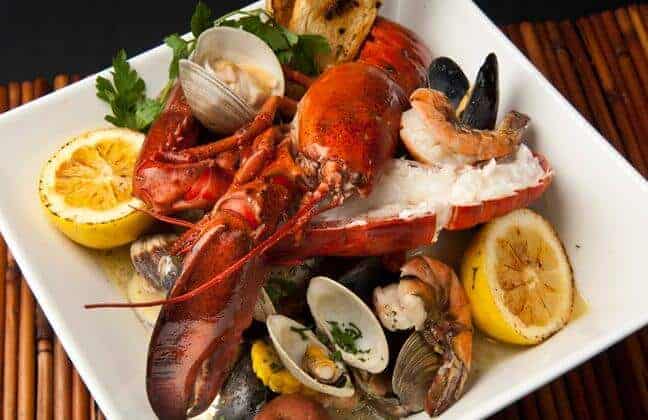Which food type is more environmentally costly to produce — livestock, farmed seafood, or wild-caught fish?
The answer is, it depends. But in general, industrial beef production and farmed catfish are the most taxing on the environment, while small, wild-caught fish and farmed mollusks like oysters, mussels and scallops have the lowest environmental impact, according to a new analysis.
The study will appear online June 11 in the journal Frontiers in Ecology and the Environment, and its authors believe it is the most comprehensive look at the environmental impacts of different types of animal protein production.
“From the consumer’s standpoint, choice matters,” said lead author Ray Hilborn, a University of Washington professor in the School of Aquatic and Fishery Sciences. “If you’re an environmentalist, what you eat makes a difference. We found there are obvious good choices, and really obvious bad choices.”
The study is based on nearly a decade of analysis, in which the co-authors reviewed hundreds of published life-cycle assessments for various types of animal protein production. Also called a “cradle-to-grave” analysis, these assessments look at environmental impacts associated with all stages of a product’s life.
Of the more than 300 such assessments that exist for animal food production, the authors selected 148 that were comprehensive and not considered too “boutique,” or specialized, to inform their new study.
As decisions are made about how food production expands through agricultural policies, trade agreements and environmental regulations, the authors note a “pressing need” for systematic comparisons of environmental costs across animal food types.
“I think this is one of the most important things I’ve ever done,” Hilborn said. “Policymakers need to be able to say, ‘There are certain food production types we need to encourage, and others we should discourage.'”
Broadly, the study uses four metrics as a way to compare environmental impacts across the many different types of animal food production, including farm-raised seafood (called aquaculture), livestock farming and seafood caught in the wild. The four measures are: energy use, greenhouse gas emissions, potential to contribute excess nutrients — such as fertilizer — to the environment, and the potential to emit substances that contribute to acid rain.
The researchers compared environmental impacts across food types by using a standard amount of 40 grams of protein — roughly the size of an average hamburger patty, and the daily recommended protein serving. For example, they calculated how much greenhouse gas was produced per 40 grams of protein across all food types, where data were available.
“This method gives us a really consistent measurement people can relate to,” Hilborn said.
The analysis showed clear winners that had low environmental impacts across all measures, including farmed shellfish and mollusks, and capture fisheries such as sardines, mackerel and herring. Other capture fish choices with relatively low impact are whitefish like pollock, hake and the cod family. Farmed salmon also performed well. But the study also illuminated striking differences across animal proteins, and the researchers advise that consumers must decide what environmental impacts are most important to them when selecting their food choices.
Some of the additional findings include:
- Overall, livestock production used less energy than most forms of seafood aquaculture. Farmed catfish, shrimp and tilapia used the most energy, mainly because constant water circulation must be powered by electricity.
- Catfish aquaculture and beef produce about 20 times more greenhouse gases than farmed mollusks, small capture fisheries, farmed salmon and chicken.
- Mollusk aquaculture — such as oysters, mussels and scallops — actually absorb excess nutrients that are harmful to ecosystems. In contrast, livestock beef production rated poorly in this measure, and capture fisheries consistently scored better than aquaculture and livestock because no fertilizer is used.
- Because livestock emit methane in their manure, they performed poorly in the acid rain category. Farmed mollusks again performed the best, with small capture fisheries and salmon aquaculture close behind.
- For capture fisheries, fuel to power fishing boats is the biggest factor, and differences in fuel use created a large range of performance in the greenhouse gas category. Using a purse sein net to catch small schooling fish like herring and anchovy uses the least fuel and, perhaps surprisingly, pot fisheries for lobster use a great deal of fuel and thus have a high impact per unit of protein produced. Dragging nets through water, known as trawling, is quite variable and the impact appears to be related to the abundance of the fish. Healthy stocks take less fuel to capture.
- When compared to other studies of vegetarian and vegan diets, a selective diet of aquaculture and wild capture fisheries has a lower environmental impact than either of the plant-based diets.
In the future, the researchers plan to look at biodiversity impacts as another way to measure environmental costs. The analysis also mentions a range of other environmental impacts such as water demand, pesticide use, antibiotic use and soil erosion that were addressed in some of the studies they reviewed, but not consistently enough to summarize in the study.
If our reporting has informed or inspired you, please consider making a donation. Every contribution, no matter the size, empowers us to continue delivering accurate, engaging, and trustworthy science and medical news. Independent journalism requires time, effort, and resources—your support ensures we can keep uncovering the stories that matter most to you.
Join us in making knowledge accessible and impactful. Thank you for standing with us!

